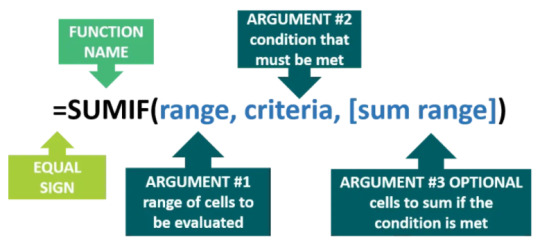#sumifsgooglesheets
Explore tagged Tumblr posts
Text
Knowing the Basics of the SUMIF Function in Excel

Similar to its more rudimentary peer, SUM function, the SUMIF function in Excel is built-in and categorized under Math and Trigonometry function. It is also known as the conditional sum and is used to add cells based on the single condition or criterion you provide.
The SUMIF function in Excel has the following arguments:
Range (Argument#1, required) – Specifies the scope of cells in which the criteria must be applied.
Criteria (Argument #2, required – The single condition or criterion used to determine which cells will be added. Common SUMIF examples in Excel of a criterion for argument#2 are:
Sum_range (Argument #3, optional) – is the scope of cells with the numeric values that are to be added if the single condition or criterion is satisfied. Take note this is optional; use it only if you want to add cells other than the Range argument (#1). Otherwise, values from the Range argument (#1) are added instead.
Any numeric value such as an integer (100 or -100), decimal (.001), date (01/01/2019), time (9:00:00 AM) or logical value (TRUE/FALSE).
A text string such as “Sales”, “Customer Name”, “Product ID”. The double quotes enable Excel to interpret everything inside as text.
An expression such as “>100”, “<>0”.
0 notes
Photo

The SUMIF function is one of the older functions used in spreadsheets. It is used to scan through a range of cells checking for a specific criterion, and then adding up values in a range that correspond to those values. The original SUMIF function was limited to just one criterion.
0 notes